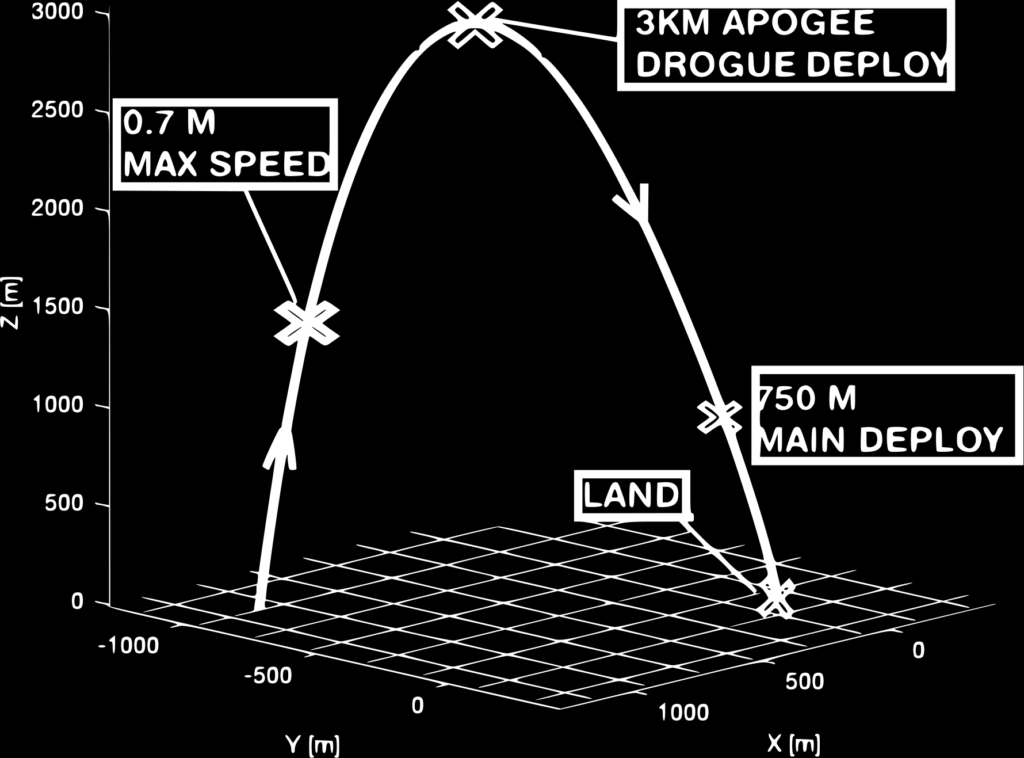Mission Analysis
“It’s not ready to launch until the paperwork outweighs the vehicle.”
Unknown
The Mission Analysis team plays a key role in defining and optimizing the trajectory and overall flight plan of the rocket. They are responsible for simulating and predicting every aspect of the mission, from launch to landing. Using advanced modeling tools, they calculate the optimal launch angle, velocity, and ascent profile to ensure the rocket reaches its target altitude or destination efficiently. The team also accounts for external factors such as wind, atmospheric pressure, and gravitational forces, adjusting their models to guarantee mission success under various conditions.

Once the mission parameters are established, the Mission Analysis team collaborates closely with other teams to ensure the rocket’s design can achieve the desired flight profile. They work on refining stage separation points, apogee targets, and recovery system deployment times, making sure that every aspect of the rocket’s journey is precisely timed and executed. By running extensive simulations, they help identify potential risks or inefficiencies, which informs design improvements and risk mitigation strategies for the actual flight.
After the launch, the Mission Analysis team plays a critical role in evaluating the success of the mission. They compare the actual flight data with their predicted models, identifying any deviations from the expected trajectory or performance. This analysis helps them provide crucial feedback to the rest of the team for future iterations of the rocket. Their detailed assessment of the mission’s overall performance is key to understanding how well the rocket met its objectives and guides the refinement of future flight plans and designs.
